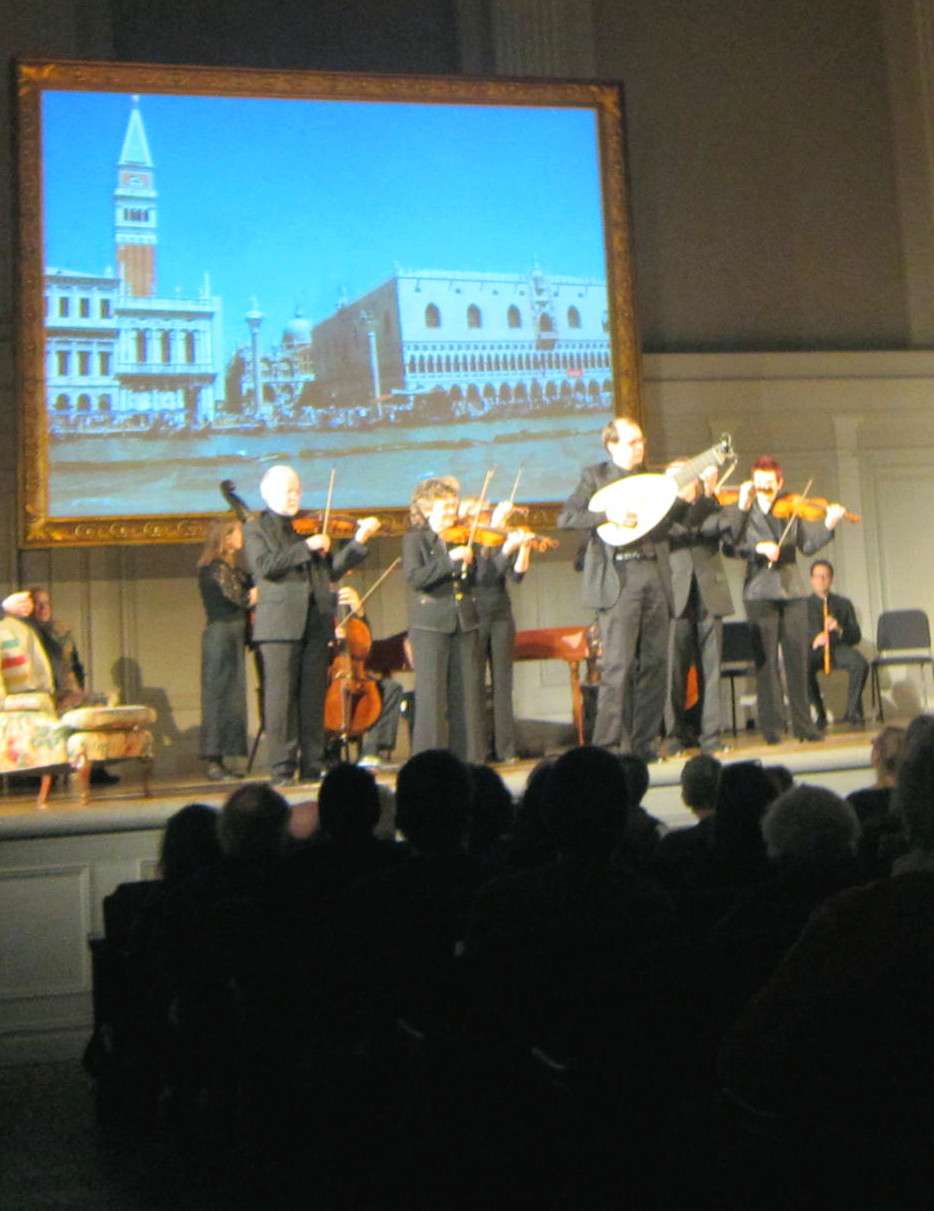|
Back
The Baroque Alive and Beautiful New York
American Academy of Arts and Letters
03/03/2013 -
“House of Dreams”
Georg Friedrich Handel: Theodora: “As with Rosy Steps” – Concerto Grosso in D, Op. 6, No. 5: Allegro – Concerto Grosso in B-flat, Op. 3, No. 2: Vivace – Concerto Grosso in G, Op. 6, No. 1: Allegro – Alcina: Three Dances (Entrée des songes agréables, Gavotte & Tamburino)
Antonio Vivaldi: Concerto in D for Lute, RV 93: Largo – Concerto in E Minor for Bassoon, RV 484: Allegro – Concerto in G Minor for Two Cellos, RV 531: Allegro – Concerto in D Minor for Two Oboes, RV 535: Allegro
Jan Pieterszoon Sweelinck: Engelse fortuin
Henry Purcell: Three parts upon a ground – The Indian Queen: Third Act Tune – St. Cecilia Ode: Symphony
Marin Marais: Alcyone: Suite
Johann Sebastian Bach: Trio Sonata in C Major, BWV 1037: Gigue – Largo for two oboes, bassoon and continuo from Aria “In Death All is Still” – Concerto for Two Violins in D minor, BWV 1043: Allegro
Georg Philipp Telemann: Wassermusik: Overture
Blair Williams (Narrator), Tafelmusik Baroque Orchestra, Jeanne Lamon (Director)
Marshall Pynkoski (Stage Direction), Glenn Davidson (Production Design), Raha Javanfar (Projections Design), Alison Mackay (Conception, Script and Programmer), Brian Williams (Narrator), Conceived, scripted programmed by Alison Mackay, Miller Theater at Columbia University (Producers)

Tafelmusik (© Coco T. Dawg)
An immaculate conception is worthless unless its executors have an equally immaculate method of making it work. “House of Dreams”, from a Toronto-based Early Music ensemble, was not only original in concept, but its technical staff, narrator, writer and of course its 16-member ensemble had all the requisite, and yes, all the immaculate skills.
The result was obviously innovational, but this was incidental. It was neither a guided tour of Europe’s great Baroque houses, not a digitalized son et lumiére show, not a history lesson, not a ballet, not a narrated 18th Century masque, not exactly a concert of 18th Century music, but...well, a little bit of it all.
The first facet of the conception was to take five of the great houses of the late 18th Century, from Paris, Venice, London, Delft and Leipzig, with their splendid art collections. Secondly the paintings, would be projected on a fairly large framed screen (I estimated it to be about 20 feet wide, 16 feet high) with effects whenever needed. I.e. closeups of the picture, a sky filled with birds, old pictures of the cities, even a dog who moved for a second.
Third was the narrator, the Canadian actor Blair Williams, who roamed about the stage, giving explanations when necessary about the era and the cities. And fourth, most important, the Tafelmusik Baroque Ensemble itself, performing sections from music which exemplified the city.
Thus we had the great art collection of G.F. Handel in his London home, with sections of his Concerti Grossi, and paintings of a ballet for which he wrote the music. Thus we had the Dutch composer Sweelinck as the foreground for the paintings of Vermeer in Delft, with more music by Henry Purcell. (Yes, Purcell had been performed in Holland, and his music was written on linen paper, and that paper was not only made in Delft but closeups of the paintings showed its manufacture.)
Of course it was Vivaldi in Venice, and Bach in Leipzig. For Paris, Lully was ignored, but Marin Marais was a gorgeous substitute, especially for those of us who had seen that eternally memorable film about him, All the Mornings of the World.
The result was not a documentary film with live music. It was a brilliant exhibition from this great Age of Reason (not a single liturgical painting was shown), a perhaps too perfect illumination of well-balanced art, well-balanced narration, oddities of information, and, above everything else, 16 musicians who stood, sat, danced, strummed, strolled and played their instruments with stunning accuracy.
Granted, part of their success was the auditorium from American Academy of Arts and Letters on 156th Street. This was my first time, but many New York ensembles love recording here, since the late 19th Century building has some fine acoustics.
But fine artists must entwine themselves with fine acoustics. For the Handel and Marais, they were a terrifically zesty ensemble. For the Vivaldi concerti, the soloists–lutenist Lucas Harris, bassoonist Dominic Teresi, cellists Christina Mahler and Allen Whear, and two incredible oboists, John Abberger and Marco Cera–gave such immaculate performances that one wished they had played the complete concertos instead of a single movement.

J. Lamon (© www.tafelmusik.org)
But director/violinist Jeanne Lamon was not offering a concert. She has been director of Tafelmusik Baroque Orchestra since its founding in 1979–a good 35 years by my count–and while they have produced many records (the most recent on their own label), the joy of their work was in hearing the complete “House of Dreams” itself.
The title fit the concert well, since their paintings are dreams in themselves. But it was originally taken from Ovid: “In a dark cave…the floor surrounding the ebony bed of the god of sleep is covered in empty dreams, waiting to be sent to the houses of mortals...”
The dreams were seen, heard, played, but most important, they were felt in this engaging two hours. I have no doubt that music will be heard and re-dreamed for many nights to come.
Harry Rolnick
|